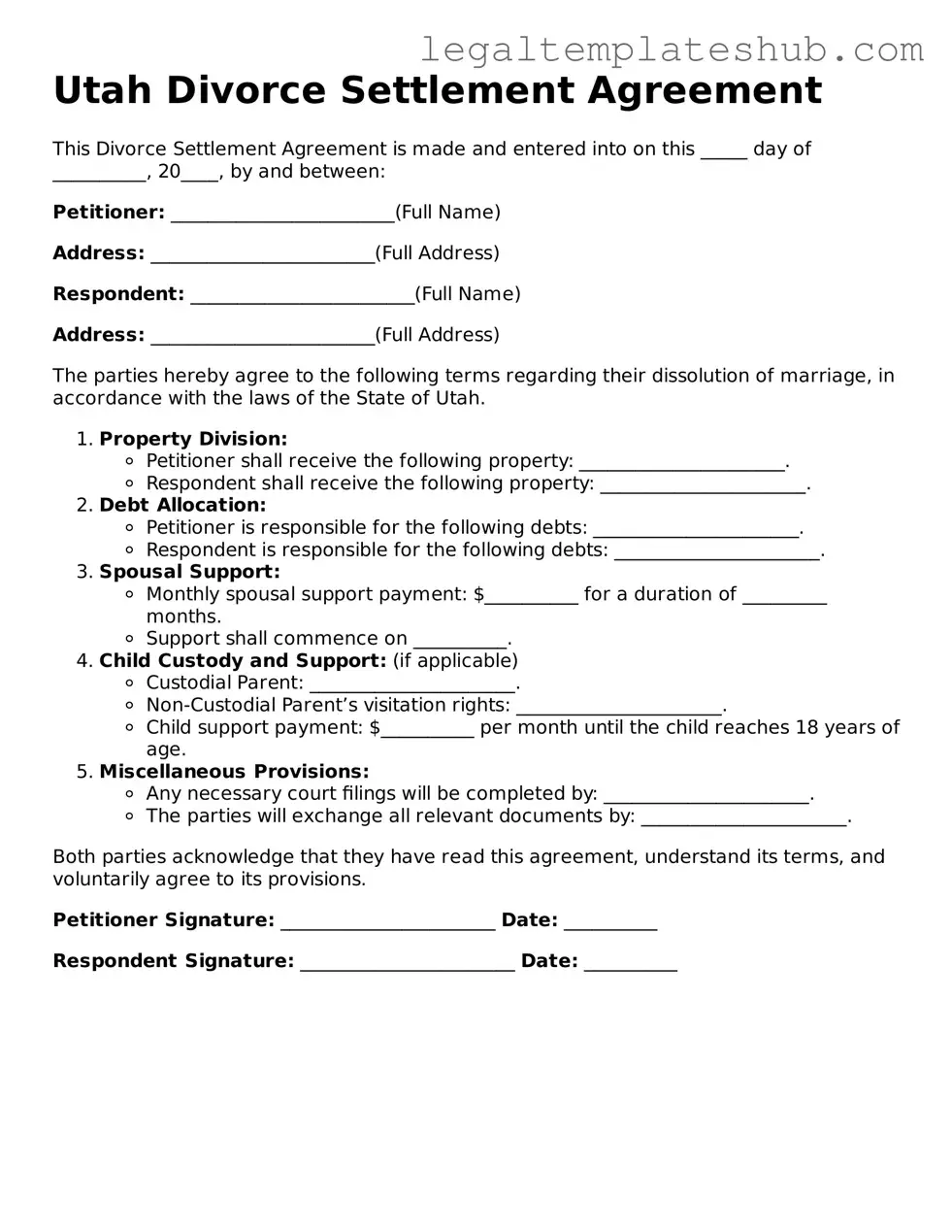- Misconception 1: The Divorce Settlement Agreement is the same as a divorce decree.
This is incorrect. The Divorce Settlement Agreement outlines the terms agreed upon by both parties, while the divorce decree is the final order issued by the court that officially ends the marriage.
- Misconception 2: A Divorce Settlement Agreement can be changed after it's signed.
While it is possible to modify the agreement, both parties must agree to any changes, and the court must approve them. Unilateral changes are not valid.
- Misconception 3: Only one party needs to sign the Divorce Settlement Agreement.
Both spouses must sign the agreement for it to be legally binding. Without mutual consent, the agreement holds no weight.
- Misconception 4: The Divorce Settlement Agreement does not need to be filed with the court.
In Utah, the agreement must be submitted to the court as part of the divorce proceedings. Failing to do so can delay the divorce process.
- Misconception 5: The Divorce Settlement Agreement covers only property division.
This is misleading. The agreement can also address child custody, visitation, child support, and alimony, among other issues.
- Misconception 6: A Divorce Settlement Agreement is only necessary if children are involved.
Even without children, a Divorce Settlement Agreement is essential for dividing assets and debts. It provides clarity and legal protection for both parties.
- Misconception 7: You can use a generic template for the Divorce Settlement Agreement.
While templates can be helpful, they may not address specific state laws or individual circumstances. Customization is often necessary to ensure compliance and fairness.
- Misconception 8: The Divorce Settlement Agreement can be verbal.
A verbal agreement is not legally enforceable in Utah. The terms must be documented in writing and signed by both parties.
- Misconception 9: The Divorce Settlement Agreement guarantees a quick divorce.
While having a signed agreement can expedite the process, the court still needs to review and approve it. Delays may occur if there are disputes or incomplete documentation.
- Misconception 10: Once the Divorce Settlement Agreement is signed, all issues are resolved.
Signing the agreement does not eliminate the possibility of future disputes. Changes in circumstances may require modifications, and both parties must be willing to negotiate.
